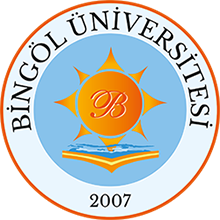Determination of antioxidant and free oxygen radical scavenger activities of Satureja boissieri Hausskn ex Boiss
Göster/
Tarih
2016Yazar
BURSAL, ERCAN
KILIÇ, ÖMER
ARAS, ABDULMELİK
Üst veri
Tüm öğe kaydını gösterÖzet
Free radicals are naturally exist in living systems; however, high amounts of free radicals canoxidise biomolecules, leading to tissue damage, cell death or degenerative processes, including aspects of ageing, cancer, cardiovascular diseases, arteriosclerosis, neural disorders, skin irritations and inflammation. Also, free radicals and lipid peroxides play an important role in oxidative stress. Antioxidants protect living organisms against oxidative damages of free radicals (1). Phenolic compounds play important roles in adsorbing and neutralizing free radicals, or decomposing peroxides.
Satureja taxa are widely used as herbal teas and spices in different countries for their pleasant fragrance. It has been reported that the essential oils of Satureja taxa have anti-inflammatory, antispasmodic, antidiarrhea, antioxidant, antiviral, antibacterial and antifungal effects, mainly in vitro (2).
The aim of this study was to determine the antioxidant potency of Satureja boissieri Hausskn ex Boiss in vitro by analyzing the DPPH free radical scavenging activity method. The high radical scavenging percentages of water extract (42.5%) and ethanol extract (55.3%) of S. boissieri indicated that it might be beneficial for improving health and preventing some diseases. Also, we used UHPLC-ESI-MS/MS technique to determine the phenolic contents of S. boissieri. Hesperidin (5051±247 ppb) and rosmarinic acid (4364±214 ppb) were identified as the major phenolic compounds.
In conclusion, leaves of S. boissieri have high potential of biological activities and phenolic content so it can be a source for using in food industry as a food ingredient to produce functional food products.
Bağlantı
http://hdl.handle.net/11472/1084Koleksiyonlar

DSpace@BİNGÖL by Bingöl University Institutional Repository is licensed under a Creative Commons Attribution-NonCommercial-NoDerivs 4.0 Unported License..













